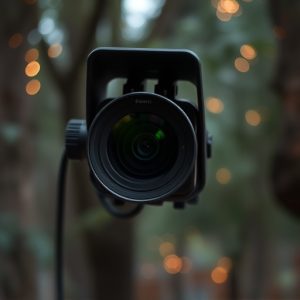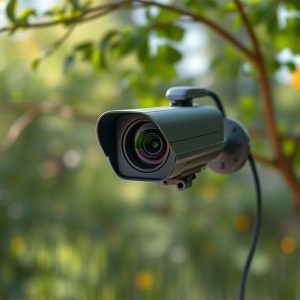Mastering Covert Recording: Placement, Detection, and Ethical Countermeasures
Covert recording devices, or spy cameras, raise significant legal and privacy concerns. Mastering ho…….
Covert recording devices, or spy cameras, raise significant legal and privacy concerns. Mastering how to conceal spy cameras involves strategic placement using everyday objects for camouflage, like hiding them behind plants or within bookcases. Advanced techniques and software are used by professionals to detect hidden cameras. Understanding these methods, such as integrating tiny mini-cameras into everyday items, is crucial in today's surveillance landscape. Ethical considerations, including local laws and respecting personal space, are vital when dealing with potential privacy intrusions.
Uncover the insidious world of covert recording equipment placement and detection in our comprehensive guide. Explore the legal implications of hidden cameras, learn advanced strategies to discreetly place spy cameras, and discover sophisticated techniques for their detection. From understanding state-of-the-art technology to ethical considerations, this article offers valuable insights into navigating the challenges posed by these clandestine devices. Discover how to conceal spy cameras effectively and stay informed in today’s privacy-focused landscape.
- Understanding Covert Recording Equipment and Its Legal Implications
- Strategies for Discreetly Placing Spy Cameras
- Advanced Techniques to Detect Hidden Cameras
- Countermeasures and Ethical Considerations for Spy Camera Detection
Understanding Covert Recording Equipment and Its Legal Implications
Covert recording equipment, often referred to as spy cameras, are devices designed to capture video or audio secretly. These tiny yet powerful tools can be easily concealed in everyday objects like pens, potted plants, or even buttons, making them nearly impossible for the average person to detect. Understanding how these devices work and their legal implications is crucial before considering their use.
The placement and detection of covert recording equipment involve a delicate balance between privacy rights and security measures. While some jurisdictions have strict regulations against unauthorized recording, others have looser laws or specific exemptions for certain types of surveillance. Knowing the legal boundaries and learning how to conceal spy cameras effectively are essential steps in navigating this complex landscape.
Strategies for Discreetly Placing Spy Cameras
Placing spy cameras discreetly is an art, and there are several strategies to master if you want to capture footage undetected. One of the key aspects is to choose locations that offer natural cover. For instance, placing a camera behind a potted plant or within a bookcase can provide excellent camouflage. These everyday objects serve as perfect hiding spots, ensuring the camera remains out of sight while still capturing high-quality video.
Another effective method is to utilize common household items as fake cameras. You can buy or create realistic-looking decoys that mimic real cameras but are designed never to be used. Positioning these decoys in prominent places, like on a shelf or next to a window, can serve as a distraction while the actual camera is hidden elsewhere, making it easier to collect evidence without raising suspicion.
Advanced Techniques to Detect Hidden Cameras
In the quest to uncover covert recording devices, professionals employ advanced techniques to detect hidden cameras. One common method involves using specialized infrared sensors that can identify heat signatures, which are often distinct from human body temperature, hinting at the presence of electronic equipment. Additionally, hand-held detectors that emit electromagnetic fields scan for any unusual signals, as many spy cameras operate on wireless networks.
Expert investigators also leverage their knowledge of common placement spots—behind pictures frames, ceiling fans, and electrical outlets—to manually inspect areas that might be hidden. They may also utilize advanced software capable of analyzing video footage frame by frame, seeking subtle artifacts or patterns indicative of a covert camera. Understanding how to conceal spy cameras is equally important; from using tiny, nearly invisible mini-cameras to integrating recording devices into everyday objects like pens or light switches, the methods employed by those aiming to secretly record are becoming increasingly sophisticated.
Countermeasures and Ethical Considerations for Spy Camera Detection
Detecting covert recording equipment, or spy cameras, has become a critical skill in today’s privacy-conscious world. While some methods involve advanced technology, there are simple, everyday tactics that can significantly increase your chances of identifying hidden cameras. One effective approach is to understand how to conceal spy cameras yourself. This involves being creative with placement and utilizing everyday objects to mask the camera’s presence. For instance, a cleverly positioned clock or decorative item can serve as a cover, making it harder for onlookers to spot the device.
Ethical considerations also play a significant role in this context. As individuals become more aware of privacy intrusions, they may take proactive measures to protect themselves, which raises questions about consent and legal boundaries. It’s essential to approach spy camera detection with respect for personal space and privacy rights. Additionally, being mindful of local laws regarding surveillance equipment can help ensure that any countermeasures taken are within legal limits, fostering a more ethical and safe environment.
Understanding the intricacies of covert recording equipment placement and detection is crucial in today’s digital age. By mastering strategies for discreetly placing spy cameras, employing advanced techniques to detect hidden devices, and considering countermeasures along with ethical implications, individuals can protect their privacy and security. Knowing how to conceal spy cameras effectively empowers folks to navigate this complex landscape, ensuring a safer and more transparent environment.


